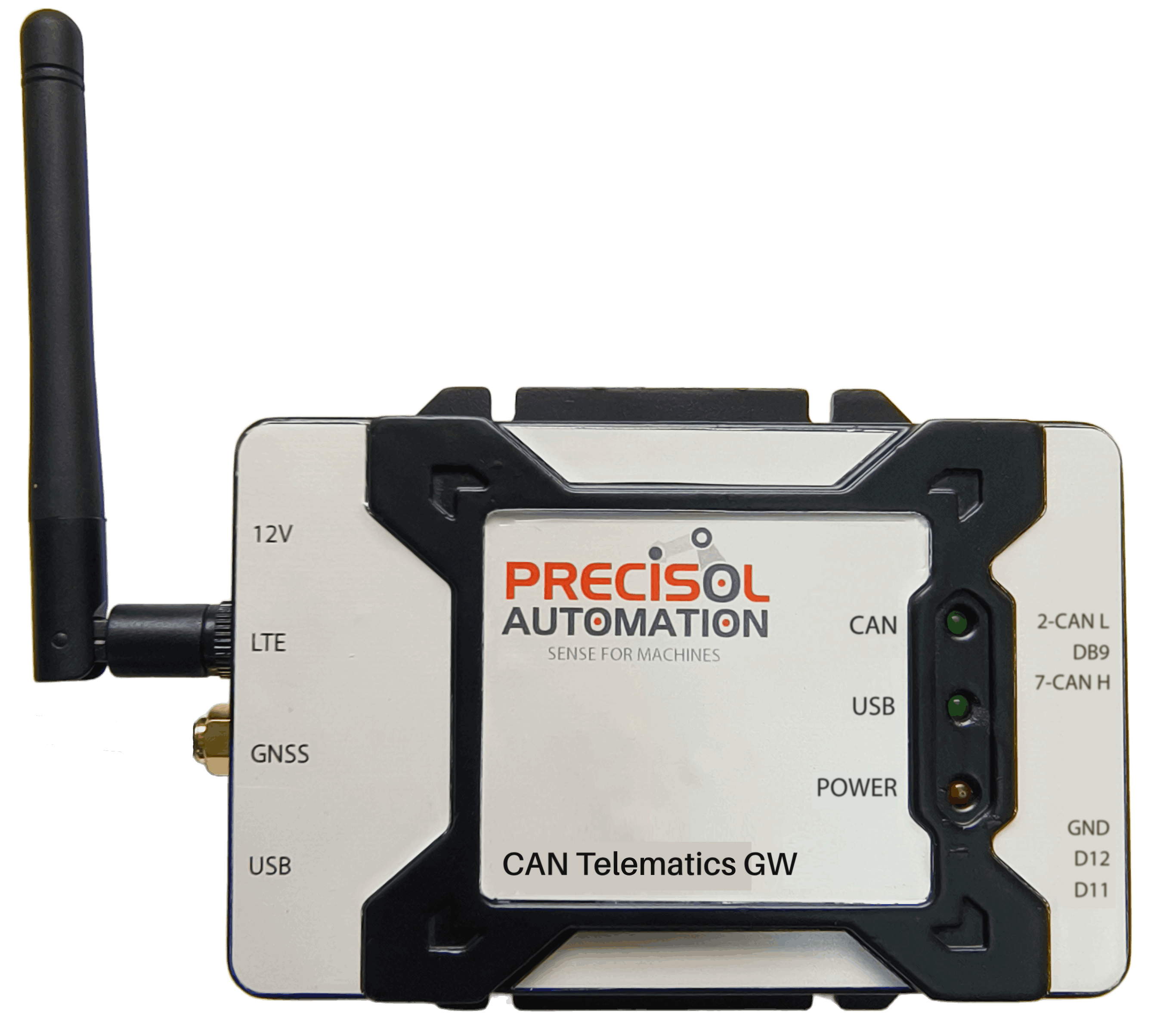Revolutionizing Mining Operations with the Precisol CAN Telematics Logger
The mining industry, a cornerstone of global commerce, operates under some of the most challenging conditions on Earth. From deep underground shafts to vast open-pit sites, the environment is inherently hazardous, and the machinery required is immense, complex, and costly. For decades, mining companies have faced persistent challenges in maintaining vehicle safety, maximizing productivity, and managing a fleet of heavy-duty equipment operating in remote and often harsh locations.
This case study examines how a forward-thinking mining company leveraged the Precisol CAN Telematics Logger to overcome these obstacles. By implementing this advanced data logging solution, the company transformed its operations from a reactive, guesswork-based model to a proactive, data-driven system, leading to significant improvements in both safety and operational efficiency. The Precisol logger, a durable device designed to capture critical data from a vehicle’s internal CAN bus, served as the central nervous system for this digital transformation, providing the real-time insights necessary to make informed decisions and optimize every aspect of their fleet management.
The Mining Challenge: A Landscape of Risk and Inefficiency
Before the adoption of the telematics logger, the mining company struggled with several critical issues that are common across the industry:

- Unplanned Vehicle Downtime:Machinery in a mine is subjected to extreme stress, leading to frequent and unpredictable breakdowns. When a massive haul truck or excavator fails during a crucial shift, it can halt the entire production chain, costing the company millions in lost productivity. Maintenance was largely reactive, with repairs only initiated after a failure occurred, leading to longer service times and higher repair costs.
- Operator and Vehicle Safety: Mining sites are a high-risk environment. Without a robust monitoring system, it was difficult to ensure that operators were following safety protocols. Incidents of harsh braking, over-speeding, and unauthorized vehicle usage were difficult to track and address. Furthermore, in the event of an accident, a lack of real-time data made it challenging to pinpoint the exact location and conditions of the incident, slowing down emergency response.
- Inefficient Fuel and Resource Consumption: Fuel is one of the largest operational expenses in mining. The company had limited visibility into how efficiently their vehicles were being operated. High idling times, sub-optimal haul routes, and inefficient driver behavior led to substantial fuel waste and increased carbon emissions.
- Data Blackout in Remote Areas: Traditional data collection methods were manual and unreliable. Vehicles operating deep underground or in isolated areas had no consistent cellular connectivity, making real-time data transmission impossible. This created a data blackout where managers had no clear picture of fleet performance until the end of a shift, and even then, the data was often incomplete.
The Precisol Solution: Bringing Light to the Data Blackout
The mining company identified a need for a solution that could reliably capture and store vehicle data, even without constant network connectivity. The Precisol CAN Telematics Logger proved to be the ideal choice due to its robust features tailored for harsh, off-grid environments. The solution was deployed across the company’s fleet of haul trucks, drills, and excavators. The implementation was simple and effective:
- Local Data Logging: The logger was installed on each vehicle’s CAN bus, where it continuously monitored and recorded hundreds of data points, including engine RPM, fuel levels, and fault codes. Crucially, the device's internal memory allowed it to store months of data locally, ensuring that no information was lost, even when vehicles were operating in areas with no Wi-Fi or cellular service.
- Offline Data Synchronization: When a vehicle returned to a designated Wi-Fi zone, such as a maintenance yard or a central command office, the logger automatically offloaded the stored data to the company's central server. This store-and-forward capability solved the problem of data blackouts and provided a continuous, historical record of every vehicle's performance.
- Predictive Maintenance and Diagnostics:The logger captured detailed fault codes and engine performance data. By analyzing this information in a centralized software platform, the company could transition from reactive to predictive maintenance. For example, a minor fault code or a gradual increase in engine temperature could be flagged by the system, allowing the maintenance team to schedule a service before a major component failed. This prevented costly, unplanned downtime.
- Operator Safety and Accountability: The system tracked key metrics related to operator behavior, such as speeding, harsh braking, and sudden acceleration. This data provided a powerful tool for coaching and training. Managers could identify high-risk driving habits and provide targeted training to improve safety and reduce the risk of accidents. In the event of an incident, the detailed log data from the moment of the crash was available for forensic analysis, providing irrefutable evidence for investigation and corrective action.
- Optimizing Productivity and Efficiency: By analyzing the real-time and historical data on vehicle location, idle time, and fuel consumption, the company was able to make significant operational improvements. Managers could optimize haul routes to reduce travel time and distance. They could also identify and correct instances of excessive idling, leading to substantial savings in fuel costs. This data-driven approach allowed them to get more out of their existing fleet and postpone the need for costly new equipment.

Measurable Results and a Safer Future
The implementation of the Precisol CAN Telematics Logger delivered a tangible return on investment and set a new standard for operational excellence.
- Safety Improvement: The company experienced a 25% reduction in major safety incidents and a significant decrease in over-speeding events. The ability to monitor and correct unsafe driving behaviors created a culture of accountability and heightened safety awareness among operators.
- Productivity Boost: By optimizing routes and minimizing unplanned downtime, the company saw a 15% increase in overall fleet productivity. Haul cycles were shortened, and more material could be moved per shift, directly impacting the bottom line.
- Cost Savings:Predictive maintenance led to a 30% reduction in vehicle repair costs, while the ability to manage fuel consumption more effectively resulted in a 10% saving on fuel expenses.
- Enhanced Decision-Making: The wealth of data provided a clear, evidence-based foundation for strategic planning, from fleet expansion decisions to resource allocation.
In conclusion, the Precisol CAN Telematics Logger was more than just a data collection device; it was a catalyst for fundamental change. It empowered the mining company to transform its operations, making them not only more productive and efficient but also, most importantly, safer for every worker on-site. This case study demonstrates how smart technology, even in the most demanding environments, can lead to powerful and lasting improvements.


